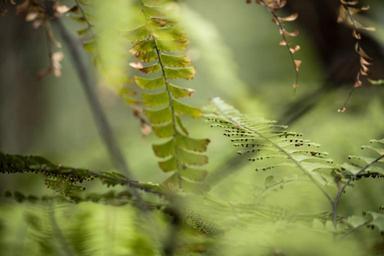Introduction
In today's fast-paced world, the environment where we work plays an essential role in our productivity and well-being. Whether you're working from home or in a corporate office, the aesthetics of your workspace can significantly influence your mood and creativity. This article delves into the art of combining colors and textures to curate an inviting office decor theme that resonates with both modern and traditional styles.
We will explore various aspects of interior decor inspiration, including wall art placement, large canvas hanging tips, and personal spaces with art. By the end of this article, you’ll have a comprehensive guide to transforming environments through thoughtful design choices that reflect self-expression and balance in design elements.
Combining Colors and Textures: Crafting a Cohesive Office Decor Theme
Creating a cohesive office decor theme begins with understanding how colors and textures interact within a space. Colors evoke emotions; textures add depth and interest. The harmonious blend of these two elements can result in an aesthetically pleasing atmosphere conducive to focus and creativity.
The Psychology of Color in Office Design
Colors can dramatically affect mood, productivity, and overall well-being. For instance:
- Blue: Often associated with tranquility, blue hues can create a calming effect, ideal for spaces requiring concentration. Yellow: This vibrant color stimulates optimism but should be used sparingly to avoid overwhelming the senses. Green: Evoking nature, green promotes relaxation while enhancing focus.
By carefully selecting colors that resonate with your personality or align with your brand identity, you set the stage for an engaging workspace.
Understanding Texture: The Unsung Hero of Decor
While color often takes center stage in design discussions, texture plays an equally vital role in creating visual interest:

- Soft textiles: Introduce warmth through cushions or rugs. Wood surfaces: Offer a natural element that adds authenticity. Metal accents: Bring sleekness and modernity into the mix.
Experimenting with various textures helps achieve balance while ensuring your office decor feels inviting rather than sterile.
Curating Personal Sanctuary Through Aesthetic Photos Wall
A well-curated aesthetic photos wall serves as a focal point that not only enhances visual storytelling but also reflects personal style. Here are some effective strategies to consider when crafting this element:
Choosing the Right Location for Your Aesthetic Photos Wall
Identify an area that naturally draws attention—perhaps behind your desk or on an empty wall near seating arrangements. This placement ensures it becomes a part of your daily view.

Selecting Images That Resonate With Your Identity
When curating images for your aesthetic photos wall:
Choose photographs that evoke positive emotions. Incorporate artwork that reflects personal interests or career aspirations. Blend different sizes for visual variety; larger pieces can anchor smaller prints effectively.Arranging Images for Maximum Impact
Consider these popular arrangements:
- Grid layout for symmetry Asymmetrical layout for a dynamic feel Salon-style display for a gallery-like effect
Using frames that complement each other while varying shapes adds intrigue to your composition.
Large Canvas Hanging Tips for Impactful Art Display
Large canvases can transform any space by acting as statement pieces within your office decor theme. Follow these tips to maximize their impact:
Determining Optimal Height for Displaying Canvases
Art should be hung at eye level—generally 57 inches from the floor—to ensure visibility without strain. If you’re arranging multiple pieces together, maintain consistent spacing between them (about 2–4 inches) to create continuity.
Creating Balance With Large Canvas Artworks
Balance is crucial when displaying large canvases alongside other decorative elements:
Pair them with smaller pieces to avoid overwhelming the space. Use furniture like desks or shelves as grounding elements around which art is arranged.Lighting Considerations for Showcasing Large Canvases
Good lighting highlights textures and colors beautifully:
- Position soft ambient lights nearby to enhance warmth. Use spotlights if you want certain areas or pieces to pop more dramatically.
Personal Spaces With Art: Reflecting Individuality in Design
Transform your workspace into a sanctuary by integrating art that speaks to you personally—this practice fosters self-expression through decor:
Thoughtfully Selecting Artwork That Resonates With You
Choose pieces that inspire creativity or evoke feelings of comfort—think about:
Abstract designs representing emotions, Nature-inspired artworks promoting tranquility, Motivational quotes framed artistically.Incorporating Personal Mementos Into Your Design Scheme
Personal touches make environments feel lived-in:
- Display travel souvenirs alongside professional accolades. Create small vignettes featuring meaningful objects on shelves or desks.
These elements narrate stories about who you are while making your working space uniquely yours!
Visual Storytelling in Design: Making Your Space Speak Volumes
Every corner of your workspace tells a story—it’s up to you how compelling it becomes! Visual storytelling involves using design elements strategically to convey messages without words:
Using Color Palettes To Communicate Themes Effectively
Establish themes based on color palettes—for example:
Earthy tones might suggest eco-friendliness, Bold hues could represent innovation, Pastels may evoke calmness.Consistency throughout creates coherence across design elements while reinforcing intended messages!
Integrating Art That Tells A Story About Work Culture Or Values
Consider incorporating murals or illustrations reflecting company values—these artistic expressions foster connection among team members while elevating morale!
Transforming Environments Through Thoughtful Decor Choices
The transformation doesn’t stop at visuals; it includes creating atmospheres conducive to productivity by integrating function into aesthetics! Here are some approaches worth considering:
Creating Inviting Spaces Through Strategic Layouts And Furnishings
Furniture arrangement directly impacts flow within any room:
Open layouts facilitate collaboration, Cozy nooks allow for focused tasks.Incorporate comfortable seating options along with functional desks promoting ergonomics—balance aesthetics with practicality!
Utilizing Color Zones To Define Purposeful Areas Within Larger Spaces
Color zoning creates distinct atmospheres:

- Use cooler tones (like blues) around workstations promoting concentration, Warmer shades (like yellows) around break areas encouraging socialization.
This technique clarifies functions visually while enhancing user experience!
FAQs
Q1: How do I choose colors for my office decor?
A1: Start by considering the emotions you want to evoke within the space; consult color psychology resources if needed! Build from there by selecting complementary tones ensuring harmony throughout all design elements present.
Q2: What types of wall art work well in offices?
A2: Opt for pieces resonating personally—abstract works often stimulate creativity whereas photography inspires nostalgia; just ensure they align cohesively with overall decor theme!
Q3: How do I effectively arrange pictures on my aesthetic photos wall?
A3: Try grid layouts for symmetry or salon-style arrangements adding eclectic charm! Maintain consistent spacing between items ensuring everything feels cohesive yet playful simultaneously!
Q4: What’s an effective way to integrate personal items into my workspace?
A4: Curate small vignettes featuring mementos alongside artwork—you'll create layers of meaning while enhancing visual storytelling throughout those areas!
Q5: Why is texture important in office decor?
A5: Texture adds depth which enhances visual interest—mix materials like wood, metal & fabrics ensures spaces feel warm rather than sterile fostering comfort during long hours spent working there!
Q6: Can I mix modern and traditional styles in my office?
A6: Absolutely! Combining different styles creates uniqueness; just maintain balance ensuring neither overpowers other https://jsbin.com/hixunomime visually—it encourages dialogue between elements enriching overall ambiance present within environment itself!
Conclusion
Crafting a cohesive office decor theme requires careful consideration of how colors and textures interact within your space—aspects intertwining seamlessly lead towards enhanced productivity alongside improved well-being! By embracing techniques such as curating personal sanctuaries filled with meaningful art or implementing thoughtful layouts tailored specifically towards enhancing user experience—you’ll discover transformative potential lies within those details often overlooked initially! So go ahead—dare yourself explore creative avenues today since every choice made contributes towards shaping unique narratives woven throughout environments we inhabit daily!